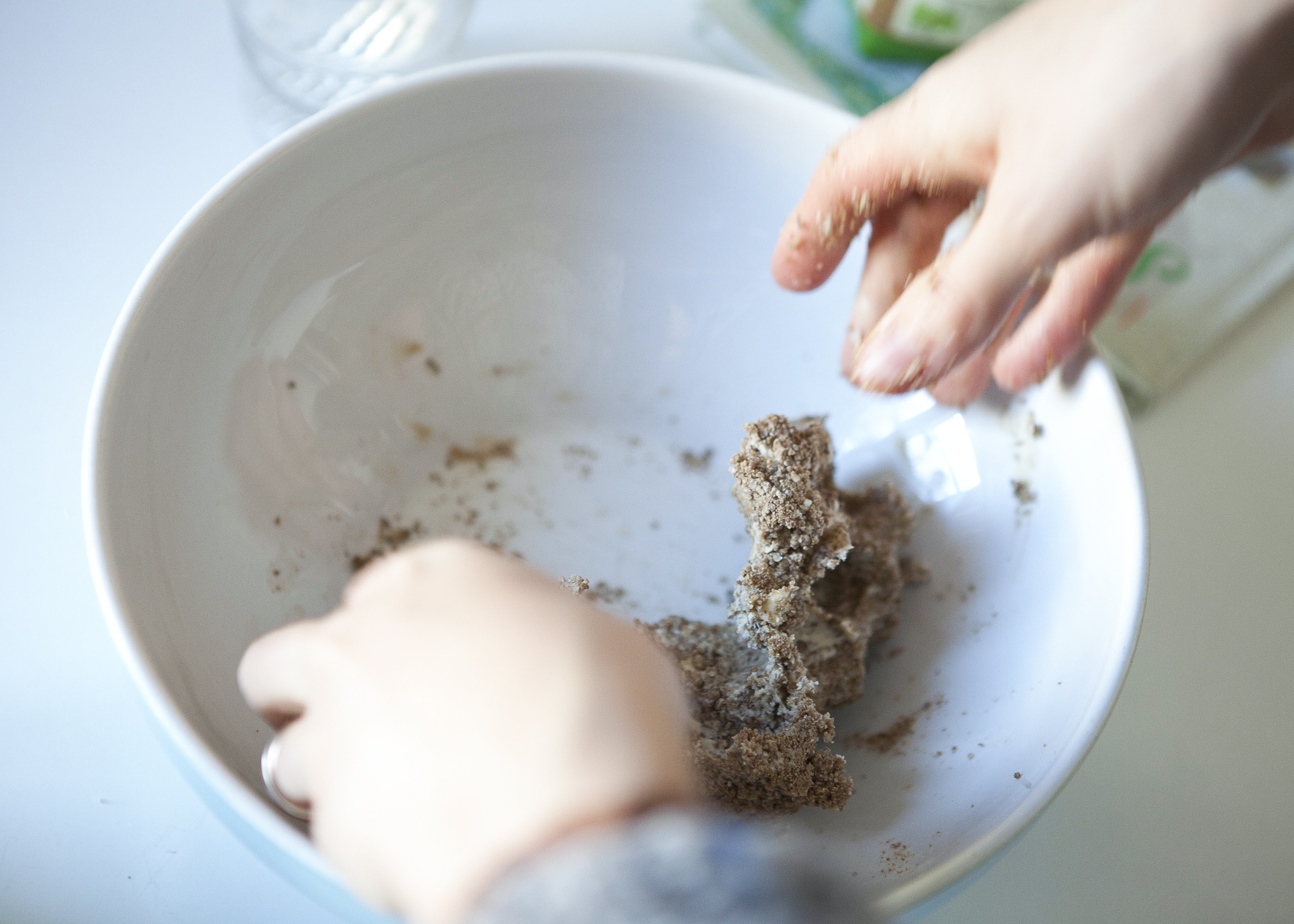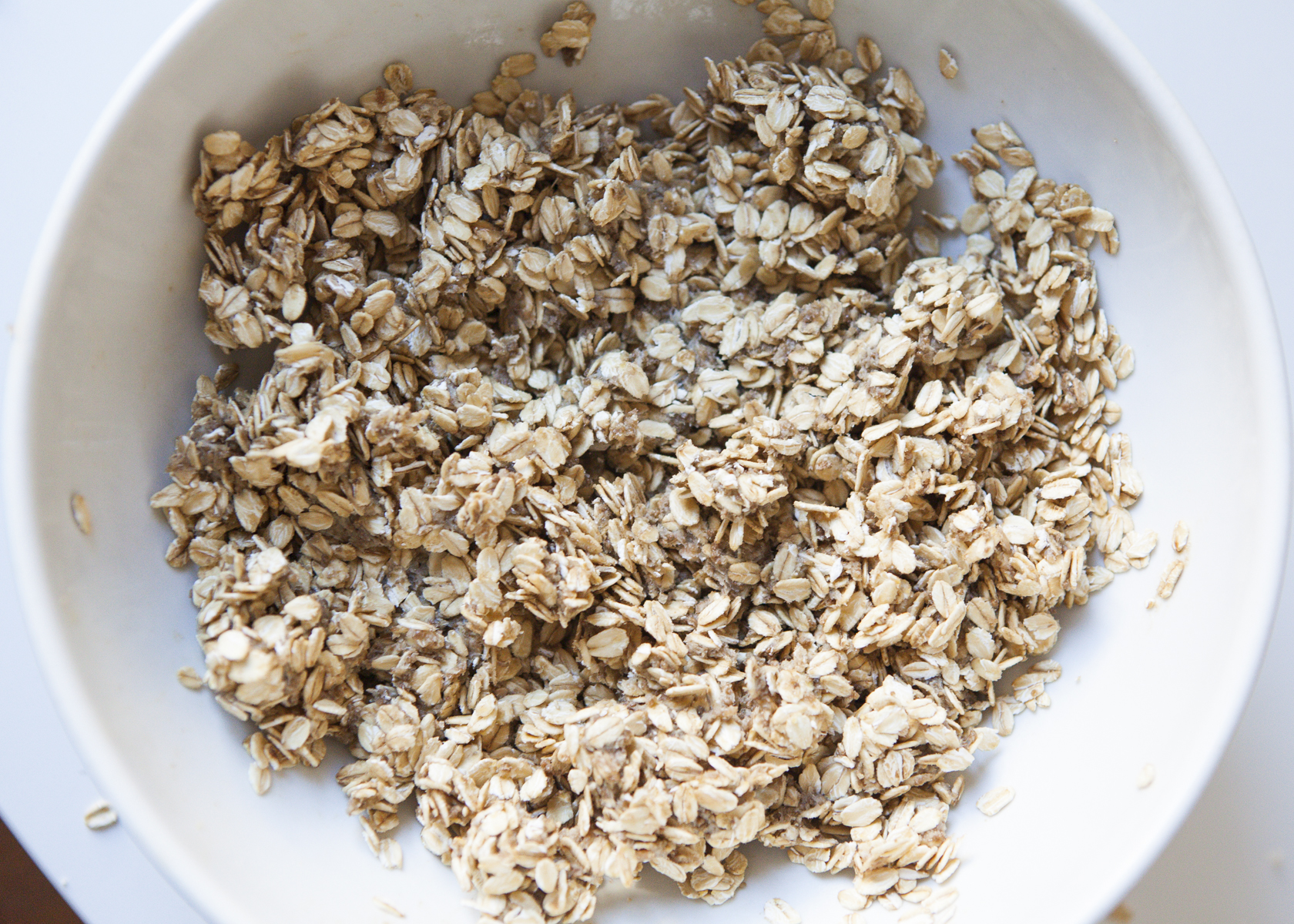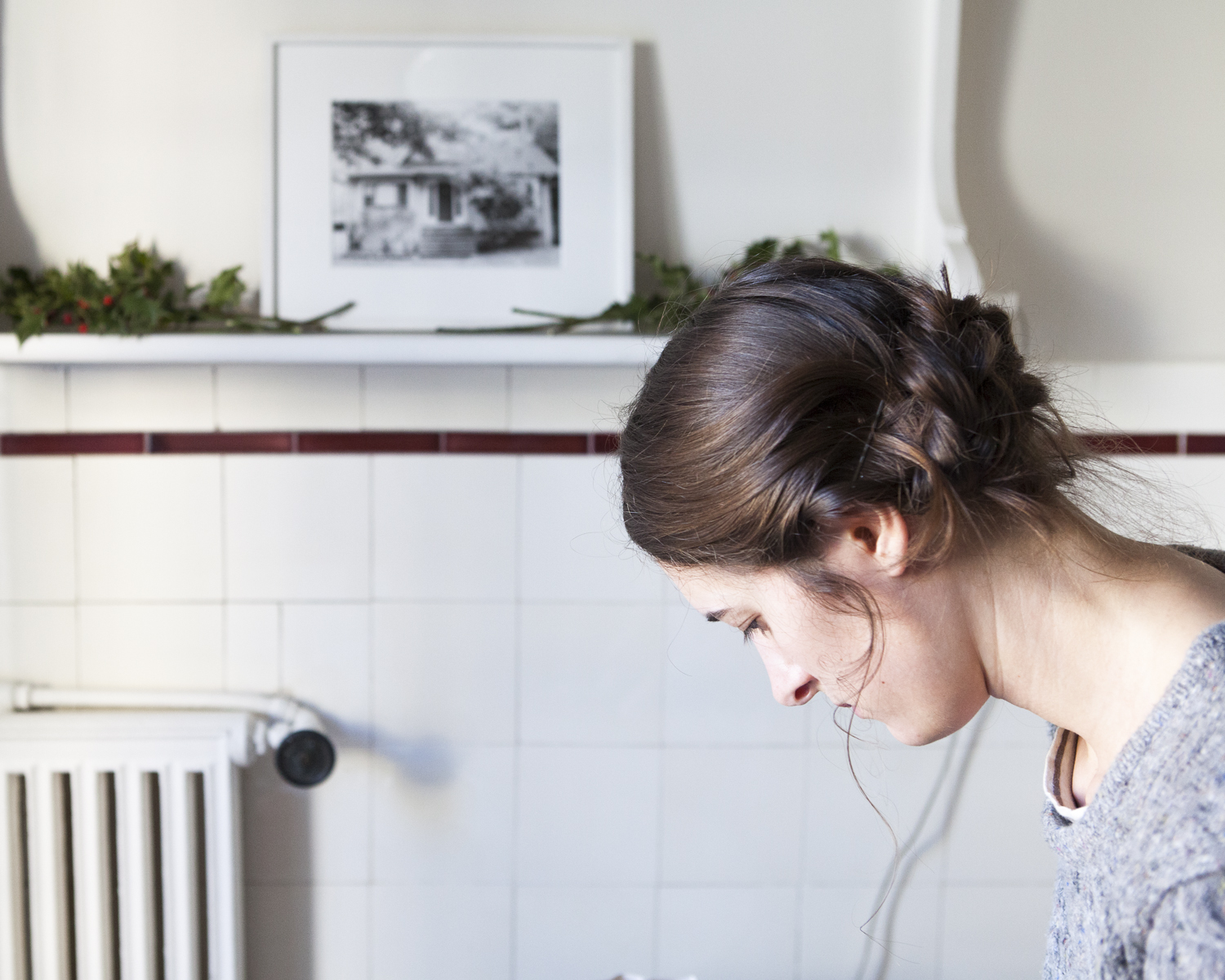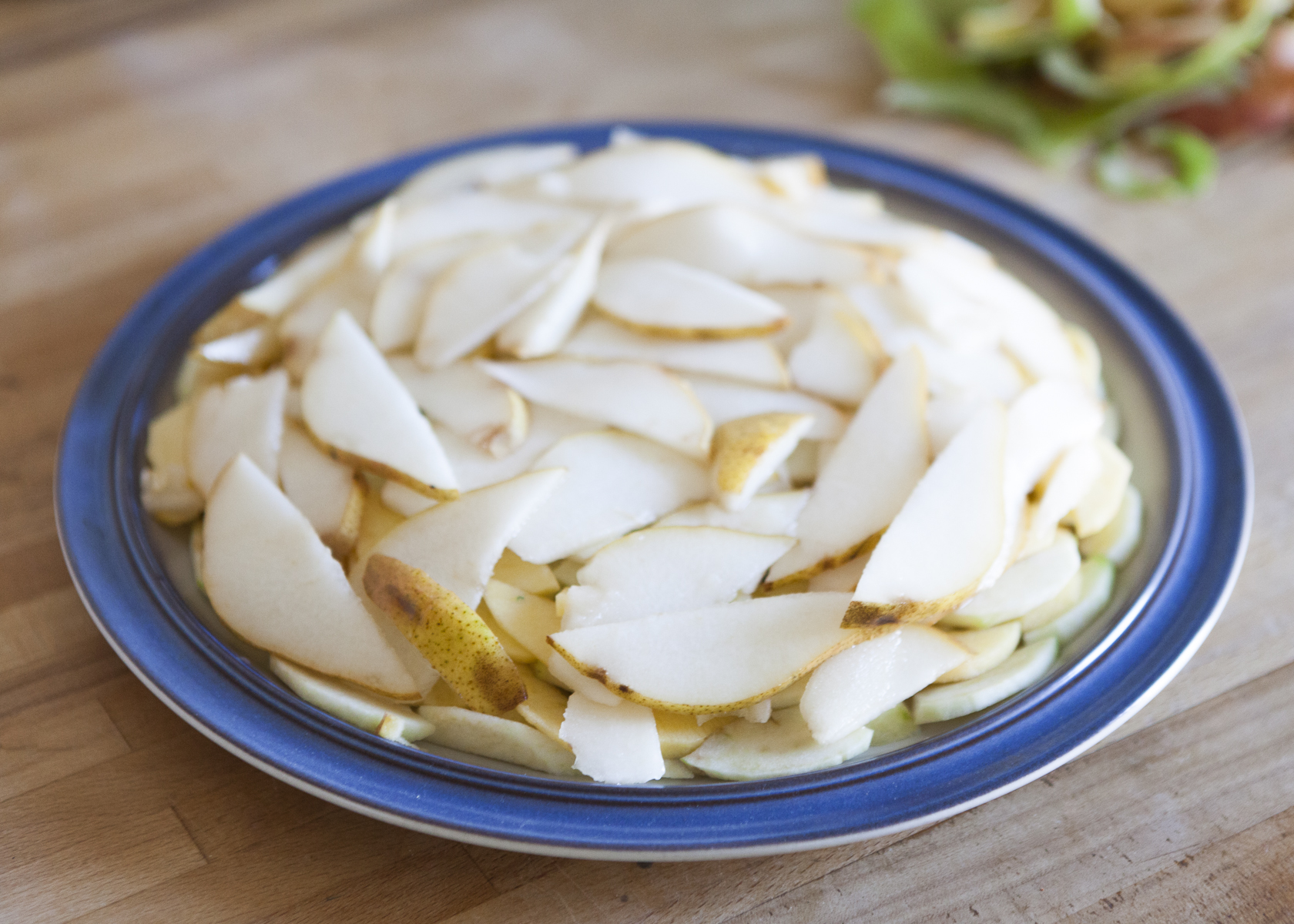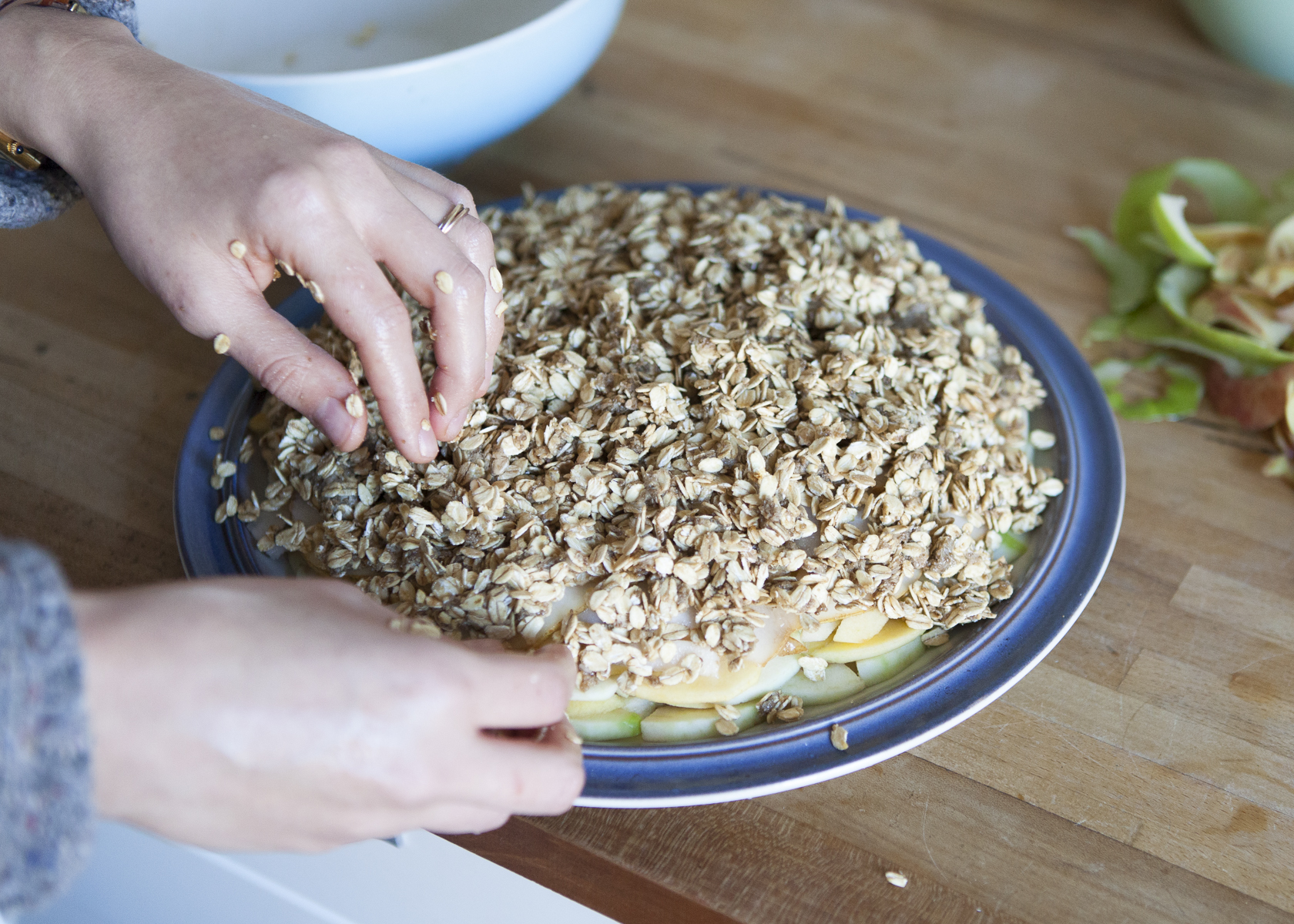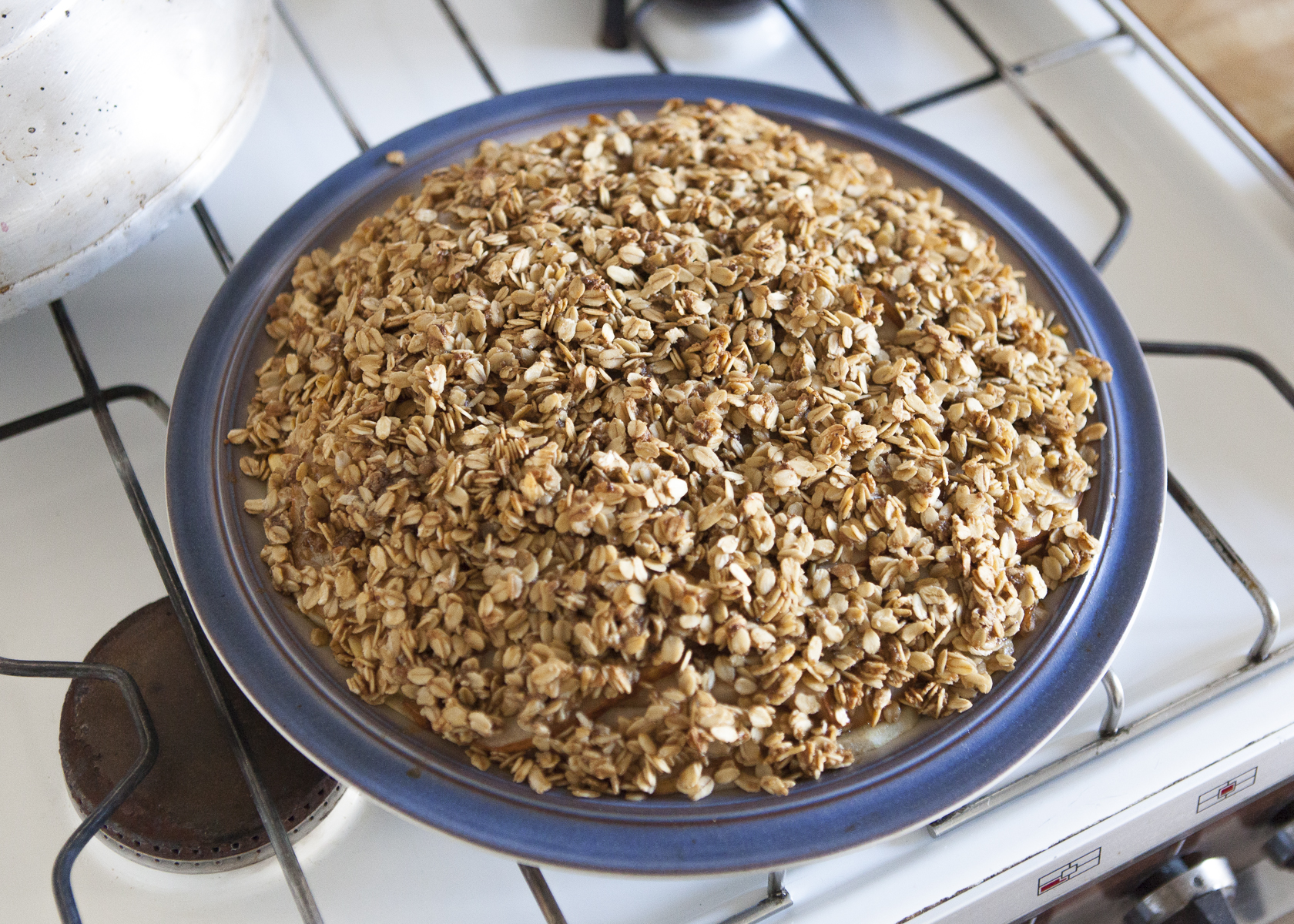I like baking, but baking doesn’t always like me. Soups like me, braised meats love me, roasted veggies and I would probably be engaged if I wasn’t already taken, but I just feel like breads and pastries don’t really get me. The me that prefers dashes and pinches to quantifiable units of measurement. The me that hasn’t faithfully followed a recipe since 2008. The me that is too laid-back (read: lazy) to ensure that I am adding exactly 1 and 1/4 cups of flour, to knead for exactly 15 (15!) minutes, to bake for no more and no less than 45 minutes at exactly 375 degrees F without opening the oven ever, not even once, just to check.
That’s not to say that baking and I haven’t had our moments. There were those two pumpkins pies for Thanksgiving in Oakland, that spelt chocolate birthday cake with raw-milk whipped-cream, those cardamom buns made outside of Stockholm (with a lot of help from a Swede).
Oh, and there have always been crumbles. That cherry crumble with Kasia and Annabel last July, the first blueberry crumble I ever made many Augusts ago in Maine, and this apple and pear crumble I’ve been making almost every couple of weeks this season.
Crumble gets me. In fact, I think it’s safe to say, crumble gets all of us. Unlike its other baked counterparts (I’m looking at you, pie), crumble is as unfussy, as forgiving as the most simple desserts–fresh strawberries and cream, raw-milk-yogurt and honey–and as satisfying. All you need are rolled oats, some butter, something sweet (honey, sugar, maple syrup), whatever fruit you have on hand, and an oven. You don’t even really need a plate.
Gleaning from Gleaning
A few weeks ago, while on a walk a bit outside of Geneva, L & I came across an apple field. The apple season had ended–the farmers had finished picking weeks ago–, but, still, many red and green delights hung from the branches. In Switzerland, as in much of Europe, there is a tradition of gleaning (See: Agnes Varda’s film Les glaneurs et la glaneuse, or this painting by Jean Francois Millet.), or free-range for all peoples on the odds & ends of a harvest. Historically, gleaning belonged to the peasant class, and was protected as their right to collect what was unwanted. A lot has changed since peasant-times, but gleaning remains a protected practice for those still wanting to make use of the unwanted, the “waste”. Those with a limited budget and a bit of free time. Those wishing to connect to the source of their food. And for those crumble-lovers on a Sunday stroll.
There are communities of dedicated gleaners here, folks who know the window for gleaning each local crop. I met one particularly spirited gleaner, or shall I say glaneuse, at our neighborhood farmer’s market. In her late 70s and towering over a card-table with few contents–a couple bags of dried herbs, five jam jars of various sizes and hues, a half-empty (half-full?) paper bag of some sad-looking quinces–this glaneuse, let’s call her Diana (Diana wants nothing to do with the internet, preferring to remain fully in the corporeal world), had produced all her table’s contents through gleaning. In fact, you could even say that she gleaned her place into the farmer’s market, an unofficial vendor of earthly delights who often disappears in the blink of an eye, or at the sight of the market patrol.
I had hopes to meet with Diana to find out more about her life, to learn the secret of her seabuckthorn jam, but the day we were supposed to meet (at an undisclosed location where she would build a fire for roasting chestnuts, if we brought the chestnuts) was too windy for fires and, well, for her, that was that.
I think the real reason baking and I don’t jive is because I’m often seeking immediate results, instant gratification. Mind you, this gratification is usually something like learning the best place to forage for Linden leaves, or being able to knit the perfect pair of socks on my first attempt, but it’s still the same emphasis on results, on future good as opposed to present process. I’m new to Switzerland, and it’s okay for me to get to know this place bit by bit, bird by bird, one gleaned apple, like one loaf of bread, one kind of pie, at a time.
You don't really need to measure anything here. Crumble is one of those things, like pancakes, that once you get down the basic ratio, it's okay to eye it. If I have less butter, I use less butter. If I don't have butter, I use ghee. Experiment! And post your findings here.
Ingredients
- Around 100grams or 1 stick of grass-fed butter, room temperature
- Around 1/2 cup of Rapadura sugar
- Around 1 cup rolled oats
- Pinch salt
- Two handfuls of small, tart apples, sliced thinly
- Two sweet & soft pears, like Comice, sliced thinly
Directions
- Heat oven to 350F. Mix butter and sugar together in a bowl and cream with a fork. This usually takes a few minutes. Add rolled oats and salt and mix well.
- Line a pie plate, a cast-iron skillet, or a big sheet of tinfoil with the apples and pears, layering them alternately (one layer of apples, one of pears). The pears should be far juicer than the apples and will give them some moisture. You could grate some cinnamon over the fruit, or squeeze a bit of lemon, or add nothing at all.
- Pour crumble mixture on top of fruits. Bake for 45 minutes, until crumble is golden brown.
Crumble will keep for 4 days if sealed.
Any other gleaners out there?
